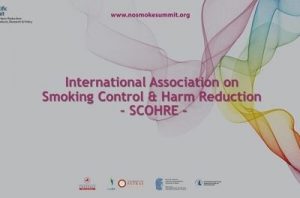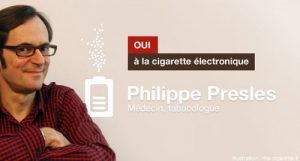Tobacco Control Experts Stress the Need for Harm-Reduction Solutions In Anti-Smoking Strategies
55 members of the International Association for Tobacco Control and Harm Reduction (SCOHRE) got together virtually at the end of last month for the 3rd International Summit on Harm Reduction, where they discussed the importance of a harm-reduction approach to combating tobacco smoking.
 The Covid-19 pandemic made it impossible for the medical experts and scientists of SCOHRE to physically get together this year, but they made good use of technology to organize the harm reduction summit online. On September 25, some of the world’s most accomplished tobacco control and public health experts exchanged opinions and ideas on current anti-smoking and nicotine addiction strategies, concluding that governments and policy makers should rely more heavily on harm reduction.
The Covid-19 pandemic made it impossible for the medical experts and scientists of SCOHRE to physically get together this year, but they made good use of technology to organize the harm reduction summit online. On September 25, some of the world’s most accomplished tobacco control and public health experts exchanged opinions and ideas on current anti-smoking and nicotine addiction strategies, concluding that governments and policy makers should rely more heavily on harm reduction.
“In an era of ever-accelerating progress and ever-cutting-edge technological innovations, new approaches based on potentially safer alternatives to cigarettes are emerging for smokers who, for various reasons, cannot quit”,” SCOHRE members concluded. “This category of smokers should not be abandoned by tobacco control policies. When it is impossible not to smoke, switching to less dangerous products has a positive effect on the health of many smokers.”
“As a physician, I cannot accept ‘stop or die’ as the only option offered to a patient who smokes,” David Khayat, former president of the National Cancer Institute and head of medical oncology at Paris-based Clinique Bizet, said during the summit. “I remind you all that 64% of those diagnosed with cancer continue to smoke. Some countries have abandoned the ‘stop or die’ strategy and introduce reduced-risk devices into tobacco control policies, with results. (…) In 1990, the first cancer risk factor recognized worldwide was smoking. In 2017 it is still smoking. Traditional cigarettes contain more than 6,000 chemicals and ultrafine particles, 93 of which the Food and Drug Administration (FDA) finds potentially harmful. The majority, around 80, are carcinogenic or potentially carcinogenic.”
“We must accept, however, that some levels of our bad behavior are inevitable,” Dr. Khayat added. “Therefore, the goal should be to minimize the harm people suffer as a result of unhealthy choices, and not to limit their behavior because this means limiting freedom and is not a viable way forward. Physicians, who often do not provide scientific evidence of the best options to their patients, must change their paradigm and put the patient at the center. As professionals we owe it to our patients.”
Andrzej Fal, president of the Polish Society of Public Health also stressed that “an alternative must be offered to those who want to quit smoking,” adding that low-risk devices can really be useful for public health. His point was also highlighted by Fernando Fernández Bueno, an oncology surgeon at the Hospital Central de la Defensa Gómez Ulla, in Madrid, Spain, who said that “we must help decision makers listen and give them the most simple solutions, then we must explain to family doctors that there are devices that can help their patients quit smoking.”
Giuseppe Biondi Zoccai, professor of cardiology in the Department of Medical-Surgical Sciences and Biotechnologies of the Sapienza University of Rome, pointed out that while electronic cigarettes are modified risk products that can help people quit smoking, they do pose some health risks themselves. Prof. Zoccai, who studies the effects on the vascular system of smokeless tobacco alternatives, said that e-cigarettes “can have effects on cardiovascular functions, both short and long-term, so they should only be considered in subjects with low cardiovascular risk and at a specific time”.
Success stories where tobacco harm reduction has made a huge difference include Sweden, where the adoption of snus has led to the lowest rates of deadly smoking-related diseases (such as lung and oral cancer) and smoking rates of around 5% of the total population. Greece was also singled out as a success story in the sense that it has recently adopted new legislation on smoking that includes harm reduction as one of its four main pillars: prevention, protection against passive smoking, cessation assistance for smokers who want to quit, and evaluating cigarette alternatives on the principle of harm reduction.
and oral cancer) and smoking rates of around 5% of the total population. Greece was also singled out as a success story in the sense that it has recently adopted new legislation on smoking that includes harm reduction as one of its four main pillars: prevention, protection against passive smoking, cessation assistance for smokers who want to quit, and evaluating cigarette alternatives on the principle of harm reduction.
On one hand, the data presented during the International Summit on Harm Reduction showed that last year the number of regulatory authorities that now allow the sale of products with reduced potential risk increased, but on the other, the most vibrant e-cigarette markets in the world, the United States and the United Kingdom, have registered a sharp and rapid decline in the number of e-cig users.
Konstantinos Farsalinos, professor at Saudi Arabia’s King Abdulaziz University, and researcher at the University of Patras, Greece, blamed the decrease in the US on the wrongly-named EVALI epidemic that swept the country last year, which both the Center for Disease Control (CDC) and the mainstream media initially blamed vaping for. It was later proven that the potentially-deadly disease had in fact been caused by vitamin E acetate, a compound used in contraband THC (tetrahydrocannabinol), but the damage was done, and studies have showed that many people still associate vaping with EVALI.
“E-cigarettes have been widely used for over a decade and millions of people in the US and around the world have used them. In all these years there has never been an epidemic of lung disease in any country. Then all of a sudden this serious respiratory illness spread among adolescents and young adults only in the United States,” Dr. Farsalinos said.
In the UK, this year’s ASH survey on tobacco use in the European country found that the number of vapers has dropped by 400,000 from last year, with the most likely reason for that being the misinformation being propagated online. It is this misinformation that the members of the International Association for Tobacco Control and Harm Reduction are hoping to combat through their work (sharing and publicizing the latest scientific data, identifying research gaps, independent verification of industry data).
















